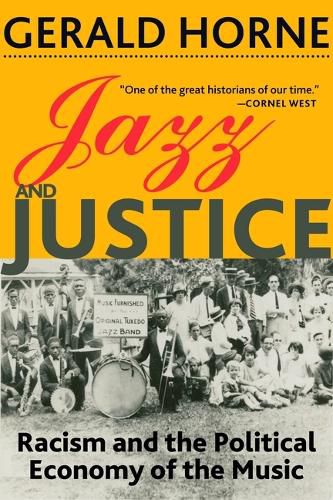Readings Newsletter
Become a Readings Member to make your shopping experience even easier.
Sign in or sign up for free!
You’re not far away from qualifying for FREE standard shipping within Australia
You’ve qualified for FREE standard shipping within Australia
The cart is loading…






A galvanizing history of how jazz and jazz musicians flourished despite rampant cultural exploitation
The music we call jazz arose in late nineteenth century North America–most likely in New Orleans–based on the musical traditions of Africans, newly freed from slavery. Grounded in the music known as the blues, which expressed the pain, sufferings, and hopes of Black folk then pulverized by Jim Crow, this new music entered the world via the instruments that had been abandoned by departing military bands after the Civil War. Jazz and Justice examines the economic, social, and political forces that shaped this music into a phenomenal US–and Black American–contribution to global arts and culture.
Horne assembles a galvanic story depicting what may have been the era’s most virulent economic–and racist–exploitation, as jazz musicians battled organized crime, the Ku Klux Klan, and other variously malignant forces dominating the nightclub scene where jazz became known. Horne pays particular attention to women artists, such as pianist Mary Lou Williams and trombonist Melba Liston, and limns the contributions of musicians with Native American roots. This is the story of a beautiful lotus, growing from the filth of the crassest form of human immiseration.
$9.00 standard shipping within Australia
FREE standard shipping within Australia for orders over $100.00
Express & International shipping calculated at checkout
A galvanizing history of how jazz and jazz musicians flourished despite rampant cultural exploitation
The music we call jazz arose in late nineteenth century North America–most likely in New Orleans–based on the musical traditions of Africans, newly freed from slavery. Grounded in the music known as the blues, which expressed the pain, sufferings, and hopes of Black folk then pulverized by Jim Crow, this new music entered the world via the instruments that had been abandoned by departing military bands after the Civil War. Jazz and Justice examines the economic, social, and political forces that shaped this music into a phenomenal US–and Black American–contribution to global arts and culture.
Horne assembles a galvanic story depicting what may have been the era’s most virulent economic–and racist–exploitation, as jazz musicians battled organized crime, the Ku Klux Klan, and other variously malignant forces dominating the nightclub scene where jazz became known. Horne pays particular attention to women artists, such as pianist Mary Lou Williams and trombonist Melba Liston, and limns the contributions of musicians with Native American roots. This is the story of a beautiful lotus, growing from the filth of the crassest form of human immiseration.